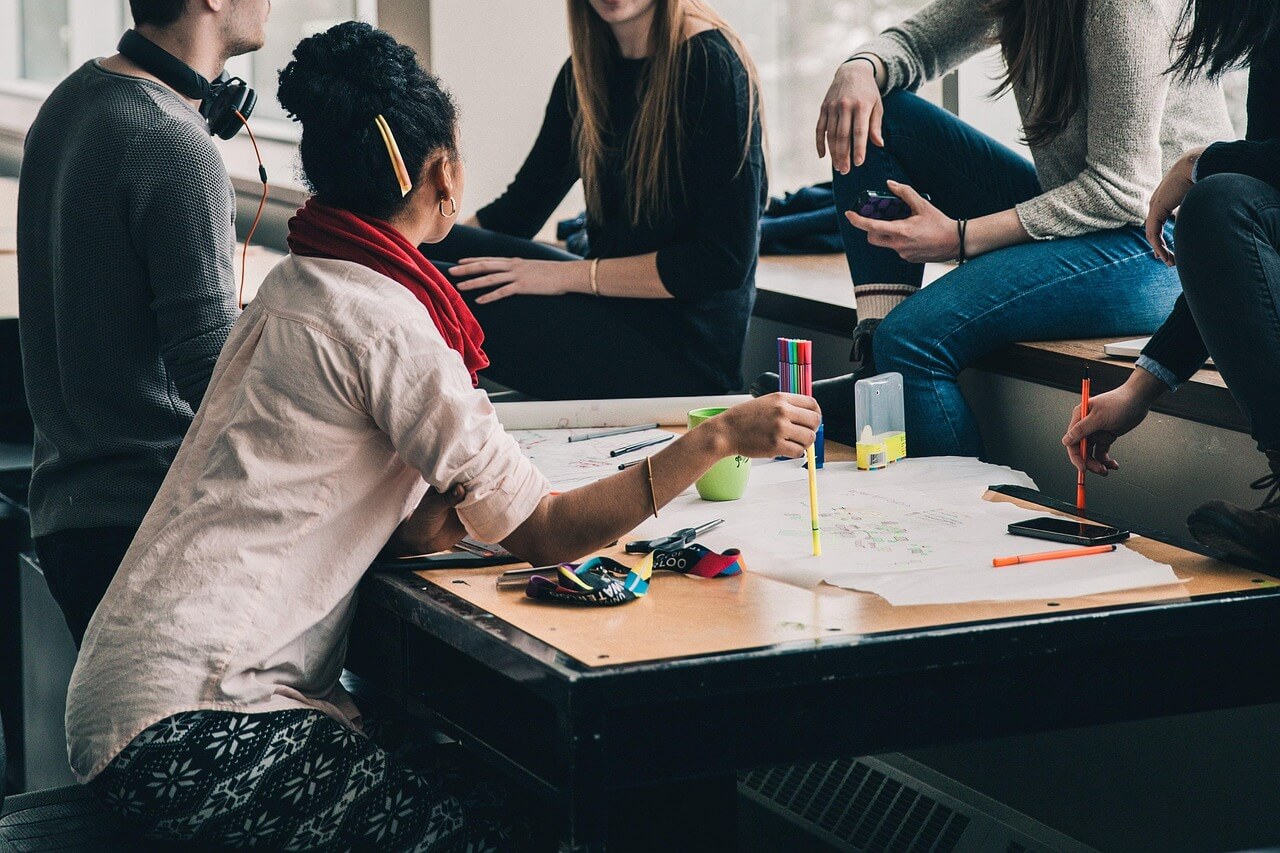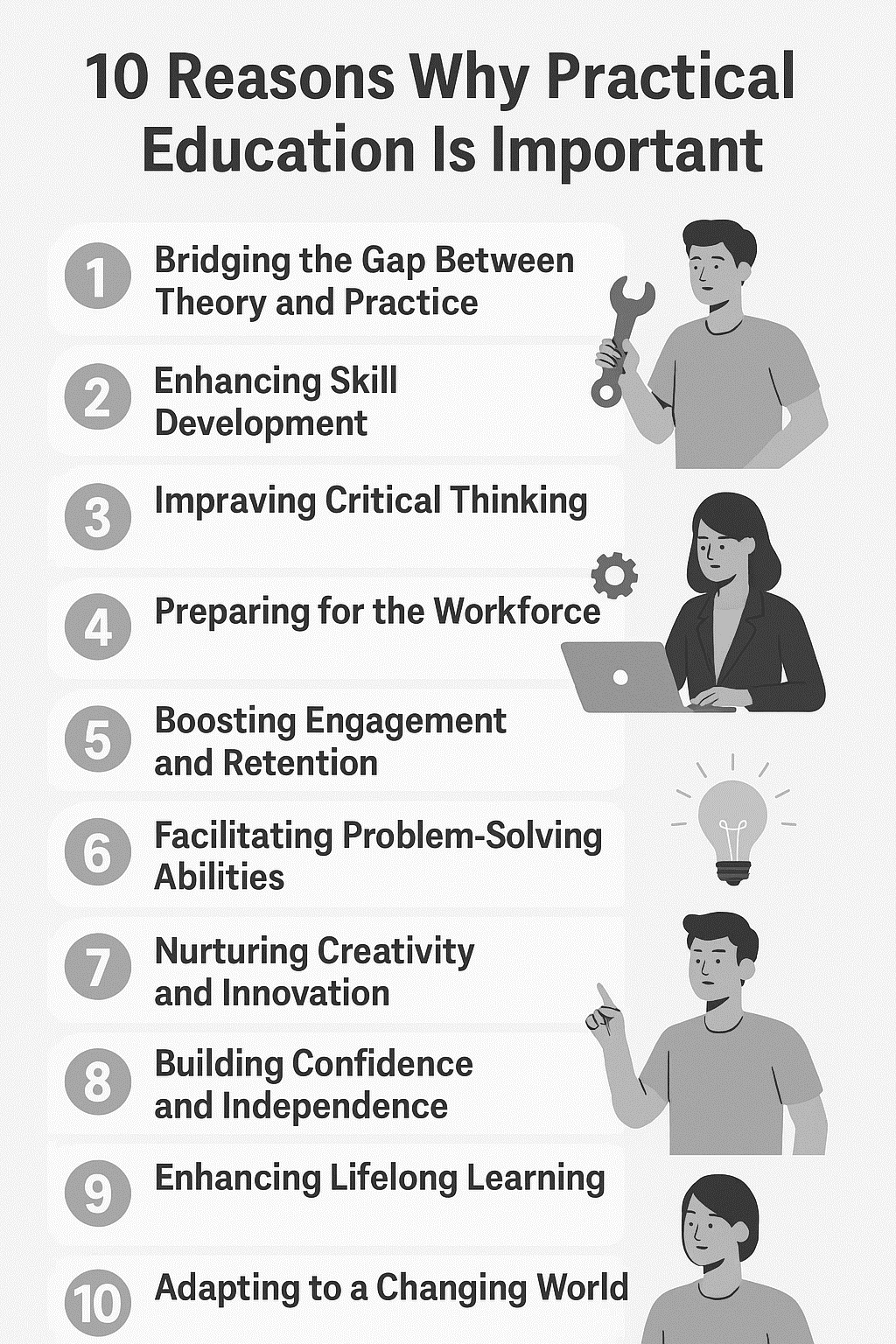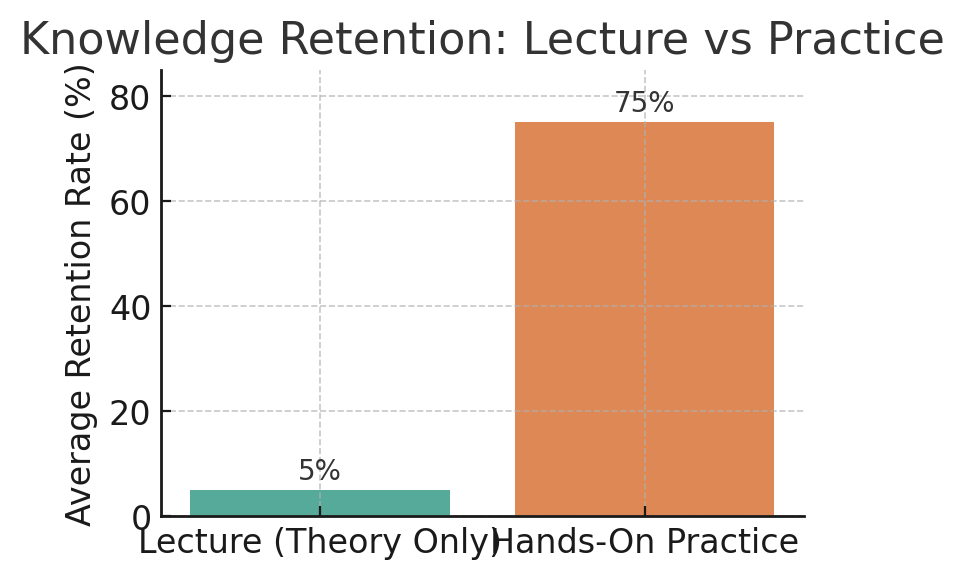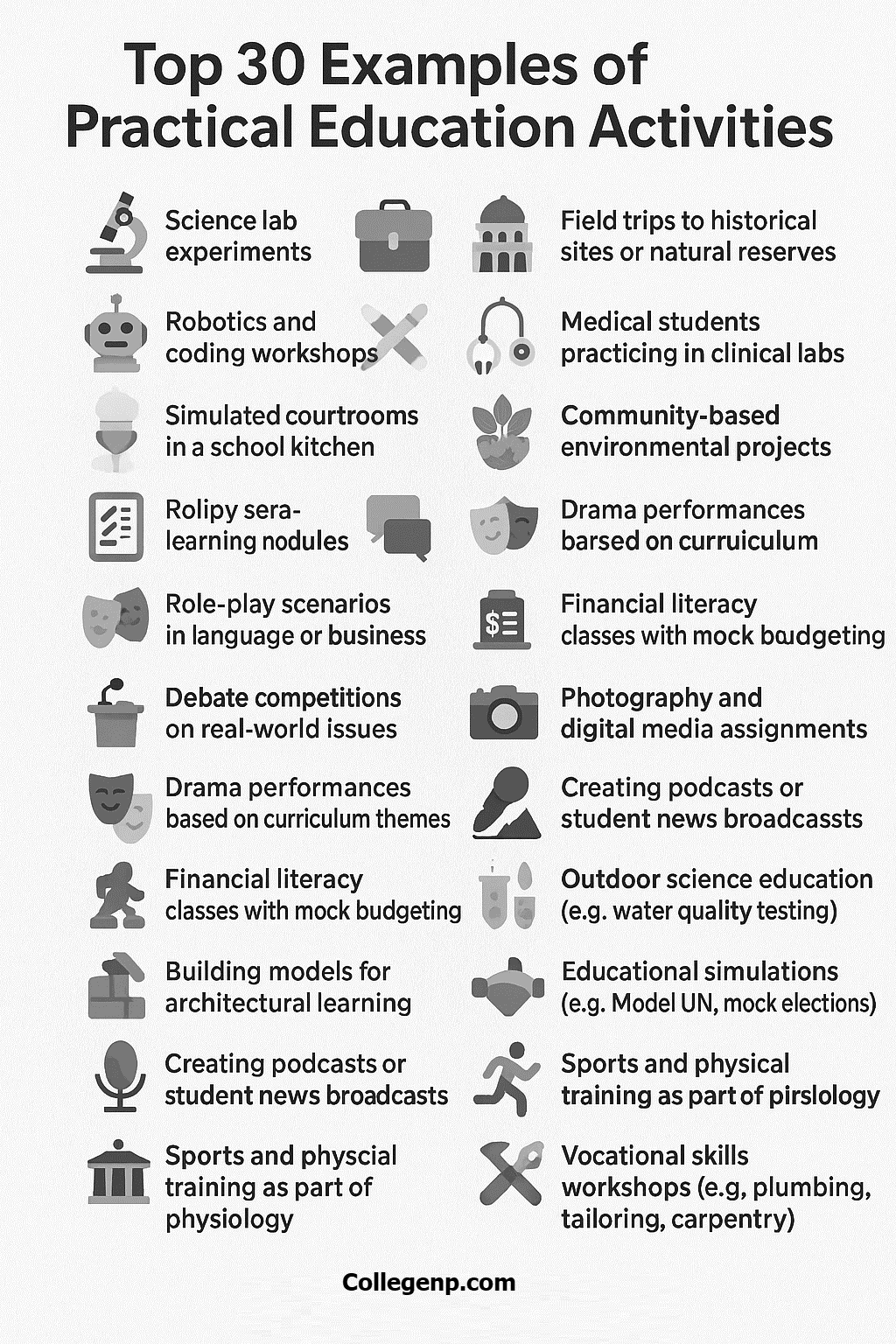
Try teaching someone to ride a bike using only a book. No roads, no wheels, just words. Would it work? Probably not. That’s the challenge with theory-only education. Practical education takes where theory falls short—it turns knowledge into action. It gives learners something they can see, touch, and do.
Whether you’re a student, teacher, parent, or someone shaping education policy, this matters. Because knowing something in theory isn’t the same as being able to use it when it counts. Let’s look at ten real, grounded reasons why practical education is so important today and for the future.

1. Connects Theory with Application
Learning about photosynthesis in a classroom is one thing. Watching plants grow under different light conditions? That’s where things click. Practical education brings theories to life.
When students can test ideas, they see how things work in real life, not just how they’re supposed to work on paper. This makes learning stick.
UNESCO calls this "learning to do"—not just memorizing, but applying knowledge meaningfully.
2. Strengthens Understanding of Core Ideas
It’s hard to understand something you’ve never tried. That’s where practical learning helps. When students build, measure, test, or explore, they do more than learn—they’re making sense of what they’ve been taught.
For instance, wiring a circuit helps a student feel how electricity flows. It goes from abstract to actual.
A 2015 study found that students who used hands-on activities in math and science had a significantly better understanding than those who learned through lectures alone.
3. Improves Memory and Long-Term Retention
Let’s be honest—how much do we remember from that one-hour lecture last month? Probably not much. But paint a wall, fix a leaky faucet, or run a group project? That stays with you.
The Learning Pyramid suggests that we remember:
-
5% of what we hear
-
10% of what we read
-
But up to 75% of what we do

That’s a massive difference. Doing activities with more senses builds more brain connections and turns knowledge into personal experience.
4. Builds Skills That Matter
Beyond test scores, education should prepare people to live, work, and contribute. Practical education builds skills you can’t get from reading alone—things like time management, teamwork, and attention to detail.
Imagine a group of culinary students. They’re not just studying recipes—they’re prepping, cooking, serving, and solving problems in real time. That’s where growth happens.
The World Bank highlights the importance of skills, not just knowledge, for employment and long-term success, especially in younger populations.
5. Fosters Critical Thinking and Adaptability
When things don’t go as planned—and they rarely do—students in practical settings have to think on their feet. What’s broken? What went wrong? How can it be fixed?
Whether it’s a failed science experiment or a group project gone sideways, these situations force learners to reflect, adjust, and try again. That’s real learning.
The Royal Academy of Engineering notes that students exposed to real-world problem-solving develop resilience and creative thinking, traits that serve them well in life and work.
6. Sparks Creativity and Exploration
Give students a challenge and some tools, and watch what happens. Practical learning environments allow for exploration, mistakes, and original thinking. It’s not about finding the answer but discovering your answer.
Building a model bridge, composing a short film, or designing an app invites learners to create, test, and refine.
Creativity ranks high among skills needed for the future, but doesn’t thrive in passive environments. Practical education gives it space to grow.
7. Encourages Motivation and Active Participation
Lectures can blur into one another. But build something with your hands, or test a theory in a real-world setting, and suddenly the material feels different—it becomes yours.
Hands-on learning fuels motivation. It gives learners a reason to care. Instead of asking, “Why do I need to know this?” they’re saying, “Let me try it myself.”
Harvard research shows that even when students think they learn less in active classrooms, they perform better. That’s the power of being involved.
8. Develops Teamwork and Social Skills
Most real-world tasks don’t happen in isolation. Whether designing a product or organizing an event, it usually takes a team. Practical education encourages students to collaborate, communicate clearly, and resolve differences.
Students learn to listen, collaborate, and contribute in group labs, drama rehearsals, or business simulations.
Employers consistently highlight teamwork and communication as essential. Practical education naturally builds those habits long before students reach the job market.
9. Builds Confidence and Self-Reliance
There’s a certain pride that comes from doing something yourself—solving a problem, completing a project, or just figuring something out.
That builds confidence. And when students succeed through effort, they trust their abilities.
Think about a student who organizes a school event from scratch. They’re not just learning logistics—they’re learning leadership, accountability, and decision-making.
UNESCO’s goals for education include fostering self-reliant learners. Practical education supports this by showing students they can take initiative and solve problems.
10. Prepares Learners for the Real World
Textbooks don’t usually teach you how to navigate a difficult meeting or troubleshoot an absolute system failure. That’s where practical education comes in—it bridges the classroom and the world outside it.
Internships, hands-on projects, fieldwork, and apprenticeships give learners a taste of real responsibilities, challenges, and results.
A YouScience report in 2024 revealed that 40% of employers feel that graduates aren't ready for real jobs. That gap won’t close with theory alone.
Learners who enter the world with experience are more adaptable, confident, and employable.
Top Practical Education Activities
Practical education can take many shapes, each designed to connect learning with doing. Here are thirty real-world activities that exemplify its diversity and depth.
Students might participate in science lab experiments or spend a summer interning with local businesses.
They may visit historical sites to enrich history lessons, work on a school farm, or run a mini-enterprise to explore entrepreneurship firsthand.
In tech-focused settings, students attend robotics workshops, tackle group engineering challenges, or repair actual hardware.
In law school, they might simulate court proceedings; in medicine, they practice in clinical labs. Community projects, cooking classes, and group design competitions provide valuable skill-building experiences.
Examples include role-playing in business or language classes, debating real-world issues, or showcasing creative projects like art exhibitions and theater performances.
Learning how to manage a household budget, solve practical math problems during a school renovation, or create digital media for school publications are all hands-on experiences. Volunteering, producing podcasts, building architectural models, or tutoring peers allows for deeper engagement.
Students might also test water quality outdoors, simulate elections, curate history exhibits, or experiment with hydroponics. Even physical education classes, vocational workshops in carpentry or tailoring, and organizing community events are meaningful forms of practical learning.
These experiences help learners understand academic content and apply it in meaningful, lasting ways.

Conclusion
Practical education doesn’t replace theory—it completes it. It helps learners not just know but do. In a constantly shifting world, taking action, solving problems, and learning by doing is invaluable.
From early school to higher education and beyond, practical learning builds the habits, skills, and mindsets learners need to thrive.
If we want education to be meaningful, it has to go beyond tests and textbooks. It must engage students with real problems and work in the real world.
That’s what practical education does. And that’s why it matters.
FAQs
What is the meaning of practical education?
Practical education is an approach to learning that emphasizes learning by doing. It means gaining knowledge and skills through direct experience—for example, experiments, hands-on projects, internships, or simulations—rather than only through lectures or textbooks.
It’s the opposite of purely theoretical learning, focusing on the real-world application of concepts.
Why is practical learning important for students?
Practical learning is essential because it makes education more effective and relevant. Students understand topics better and remember more when they actively engage in learning.
It also prepares them with skills like problem-solving, teamwork, and adaptability, which are essential in real life and the future. Overall, it bridges the gap between knowing something and being able to do something with that knowledge.
How does practical education improve skill development?
Practical education allows students to practice and refine skills in real conditions by providing hands-on experiences. For instance, a student in a technical class might use industry tools or software, thereby building competence.
It also develops soft skills—students improve communication and teamwork when working on practical group projects. These experiences create muscle memory and confidence in using skills that pure theory can’t provide.
Can practical education replace theoretical education?
The best approach is to integrate both rather than completely replace theory. Theoretical education provides foundational knowledge and frameworks, while practical education allows students to apply and test that knowledge.
We need theory to understand the principles, and practice to understand the implementation. Schools and colleges use a blend for optimal learning: they teach and reinforce the theory with practical exercises. Too much of one at the expense of the other can be less effective.
What are some examples of practical learning activities?
Examples include laboratory experiments in science classes, workshops in vocational courses (like carpentry, coding bootcamps, etc.), internships or on-the-job training, project-based assignments (like designing an app or conducting a survey), field trips (e.g., a biology field study in a forest), role-playing scenarios (common in medical or business education), and group projects or competitions (like science fairs, robotics competitions). Even simple classroom activities like debates or simulations are forms of practical learning.
Does practical education help with soft skills?
Yes, definitely. Practical education often requires communication, collaboration, and problem-solving in a group, all of which build soft skills. For example, when students work in teams on a project, they learn to communicate their ideas, listen to others, and resolve conflicts.
When they present their project, they develop public speaking and confidence. These are crucial life skills that aren’t gained from memorizing facts alone, but are a natural byproduct of hands-on learning experiences.
How can schools incorporate more practical learning?
Schools can start by adopting pedagogies like project-based learning, inquiry-based learning, or flipped classrooms, where applicable.
They can invest in lab equipment, maker spaces, or computer labs to facilitate hands-on projects.
Another significant step is partnering with local industries or communities to set up internships, apprenticeships, or mentorship programs.
Training teachers to include interactive activities, experiments, or real-life case studies in lessons also helps. The curriculum can be revised to ensure that each theoretical component has an associated practical exercise or demonstration.
What are the challenges of practical education?
Common challenges include resource constraints (not all schools have labs or equipment for every subject), larger time investment for hands-on activities compared to lectures, the need for teacher training in new methods, and assessment difficulties (it’s harder to grade a project or skill demonstration than a multiple-choice test).
Furthermore, some educational systems have rigid curriculums focused on exams, which can limit practical work.
However, many of these challenges can be addressed through policy support, funding, and gradually shifting assessment methods to value practical skills alongside academic knowledge.
Is practical education only for vocational studies or also for academic fields?
It’s for all fields. While practical learning is evident in vocational training (like plumbing, nursing, and mechanics), it is equally beneficial in academic fields.
For example, in mathematics, doing practical projects or using manipulatives can deepen understanding; in literature, performing a play or creative writing is a helpful application of literary analysis; in history, working with primary source documents or visiting historical sites brings theory to life.
Even highly theoretical fields benefit – e.g., physics and chemistry rely on experiments, and economics students might do practical data analysis. Practical education means making learning active and applied, which can be done in any discipline.
What is the impact of practical education on career success?
Practical education has a positive impact on career success. Students with internships or project experience often transition to the workplace more easily, as they already have some experience with real work scenarios.
Graduates with practical experience tend to have better professional networks (through internships/industry projects) and can demonstrate skills on their CVs. Surveys indicate employers value graduates with practical experience—they’re often seen as more “job-ready.”
In many cases, practical education can also inspire career choices by exposing students to hands-on aspects of different fields and helping them discover their passions.
Over a career, the ability to learn by doing also makes individuals more adaptable and proactive in acquiring new skills on the job.
Education

